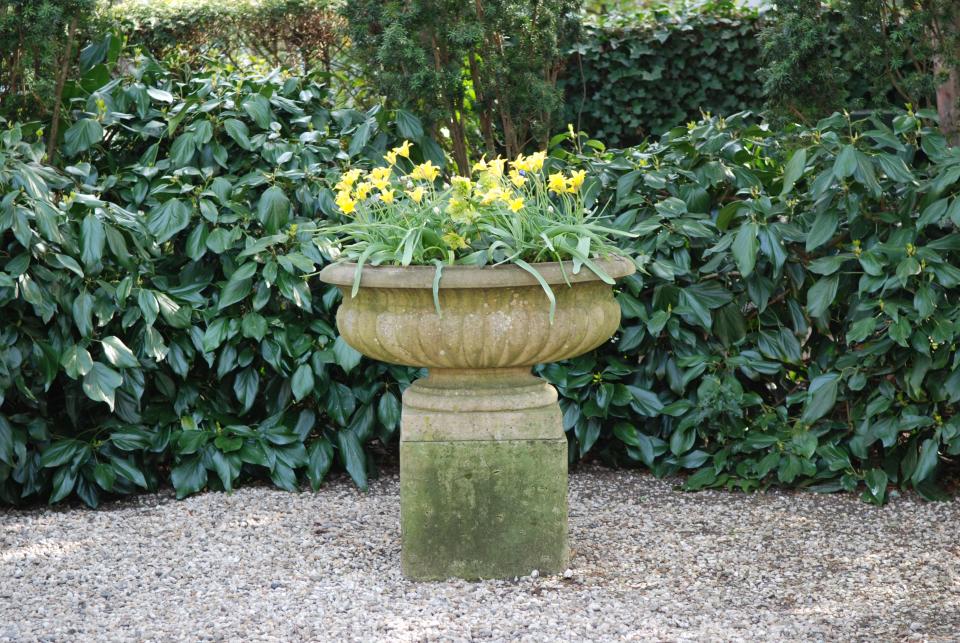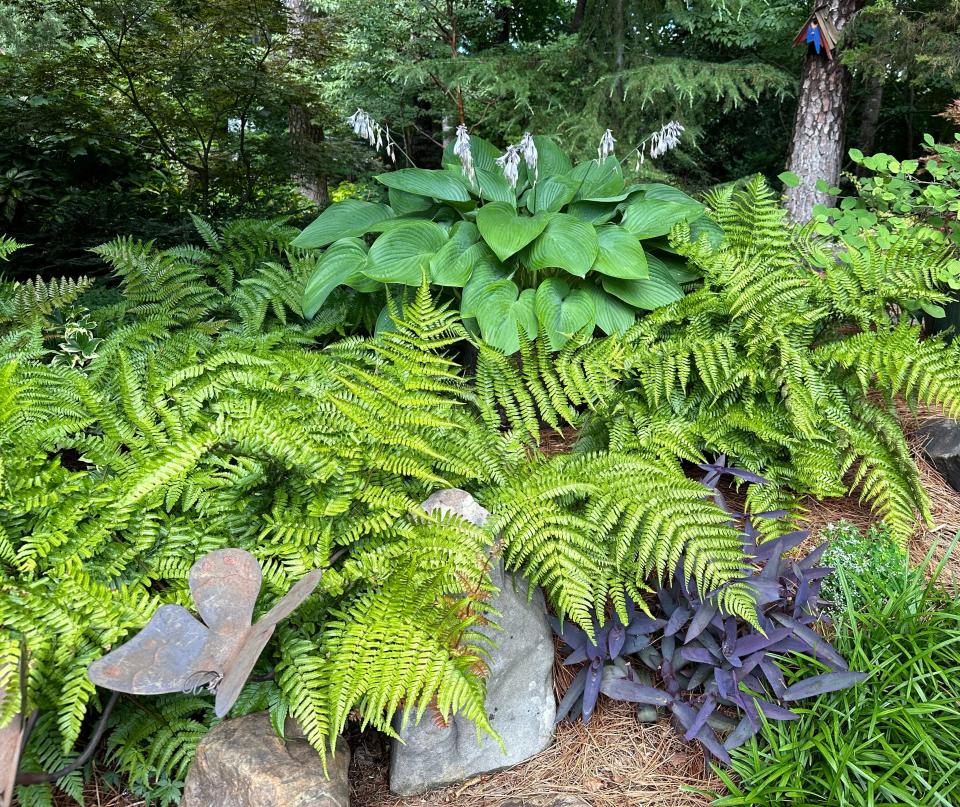How to create a vignette in your garden
What a glorious day when you can gaze across the landscape and be happy with what you have created. You have removed all the weeds, put down mulch, picked up the sticks that were downed from the last windstorm and now you can sit back and relax and enjoy the perfect garden. Very few gardens look perfect all at once. This is why you create the right combination of plants for a vignette where the plants will be just right at the same time.
So, what is a vignette? A vignette is simply a small collection of plants arranged in a visually appealing way; to create an intimate spot in the garden that provides a focal point or scene. It is to create the right combinations of texture, form and color. This is something that I have tried hard to achieve over the years and I have to admit, I have room to improve. I try to create vignettes where different components work well together and create harmony. I try to create areas where plants look lovely together, usually a smaller more intimate spot.
This is something that takes a little planning and for me, trial and error. This does not come easy for me. I plant and move and plant and move. The other day, I wanted to purchase some heuchera to plant near some ‘Double plan candy corn’ spirea. I picked out a heuchera that has a red leaf, thinking it would go perfectly with the red in the spirea. Well, I was completely wrong with the color. The heuchera was more of a pink-red and not a copper-red. Luckily, my friend at the garden center let me exchange it for some ‘Twist of Lime’ heuchera so I went in another direction color wise. This made a much better combination.

Focusing your attention on one area and how it will look now and then what you can do to make this area look nice in another season is how I try to go about this. Make sure you have some evergreens to carry you garden and each vignette through the winter months when some plants are leafless and others have gone to sleep for the winter. I use evergreens and trees to give me the backbones that a garden needs. Then I fill in with shrubs and perennials to give me the texture and color that is needed to make the garden come alive.
One of the first things you need to do is to make sure the plants you choose have the same growing requirements. If you are planting in a sunny area, all your plants will need to be ones that will survive in at least 6 or more hours of direct sun. Likewise, if you are working in a very shaded area, all your plants will need to have less than six hours of sun and, usually best with dappled light or afternoon shade.
The same is true for plants that need a lot of water verses plants that want a little drier condition, especially when dormant. Some plants like Ligularia and maidenhair ferns need more moisture where as some bulbs would rot in this situation. Know what the requirements are for plants are before buying or planting.

Now for the vignettes, these can be as simple as an area underneath a large tree, a small area in the back corner of the property or the entrance to your garden shed. These are all opportunities to create a charming display of plants. You might want to start with some pieces of furniture like a bench or a couple of chairs. Take this little area and create an area that will be a focal point with plants that will look good together. Just focus on this one spot for now. Another idea is to add a colorful piece of pottery to pick up the color of some plants. I have seen a lovely blue container placed in a garden setting to compliment some blue flowers that were planted nearby.
You also want to think of different shapes and sizes. To have every plant the same size and same shape and texture is ok but if you have some shorter and others a little taller, this gives some interest to the garden. To make this work, you need to know what blooms at the same time and what colors look good together.
When it comes to color, this is where I have to play around with plants. I have an area that is a white garden and I have had to work with different shades of foliage as well as finding plants that have white flowers. The different shapes of leaves, heights of plants, and textures is what is very important here. I have white hydrangeas in the back of one area and then Hostas with white margins in front with some white agapanthus to give different shapes and textures.

As you visit garden centers to choose plants for your garden this spring, keep in mind the different qualities of plants. Be sure to get some plants with nice foliage that will help carry your garden through the season and give the drama you want. Plant a vignette somewhere that will give a visitor to your garden a show worthy of a glowing review.
Betty Montgomery is a master gardener and author of “Hydrangeas: How To Grow, Cultivate & Enjoy,” and “A Four-Season Southern Garden.” She can be reached at bmontgomery40@gmail.com.

This article originally appeared on The Fayetteville Observer: Gardening advice. How to create a vignette in your garden.

